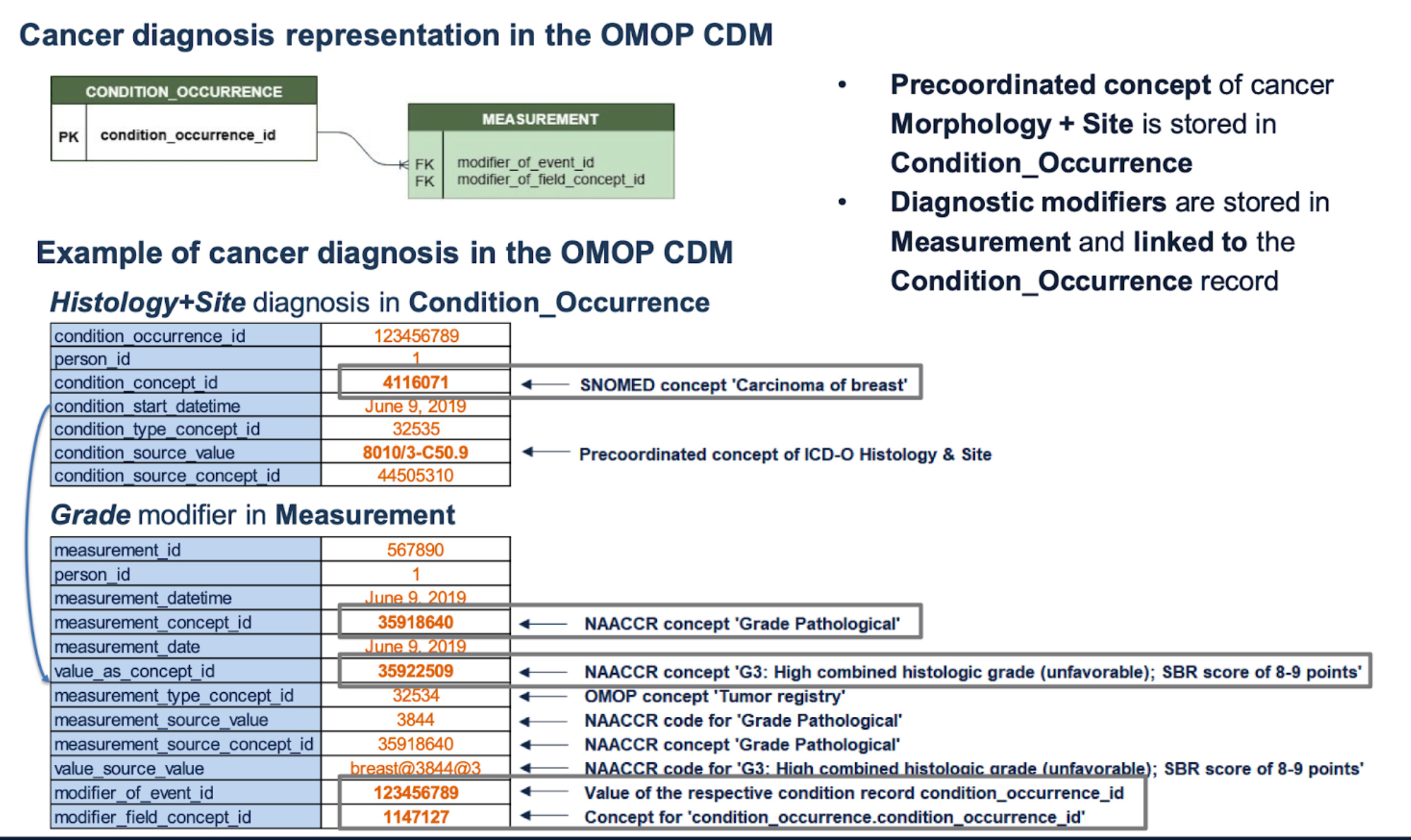About ~35% of the ICDO3 codes do not have a relationship mapped to a schema name. I wonder if we can augment the vocabulary so that the user can have the options to query on the schema name (i.e. breast) OR the ICDO3 code (i.e. concept_code like ‘%C50%’), if they are building a cohort of breast cancer patients? Perhaps at minimum the mappings for the major cancer types can be filled out.
8050/2-C50 -> Breast
8343/3-C50.3 -> Breast
SELECT
c.concept_id ,
c.concept_code,
c.vocabulary_id,
cr.relationship_id,
c2.concept_id concept_id2,
c2.concept_code AS concept_code2,
c2.vocabulary_id AS vocabulary_id2
FROM
concept c
LEFT JOIN
concept_relationship cr
ON
cr.concept_id_1 = c.concept_id
AND cr.relationship_id = ‘ICDO to Proc Schema’ --similiar issue for ‘ICDO to Schema’
LEFT JOIN
concept c2
ON
c2.concept_id = cr.concept_id_2
WHERE
c.vocabulary_id = ‘ICDO3’
AND c2.concept_code IS NULL OR c2.concept_code = ‘All Other Sites’;

